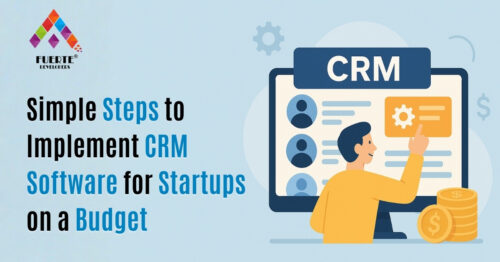Building an app no longer requires a team of seasoned developers or months of coding. Thanks to the rise of low-code and no-code platforms, startups, freelancers, and even non-tech entrepreneurs can now build fully functional apps with drag-and-drop interfaces, pre-built templates, and automation features—all without writing a single line of code (or barely any).
In 2025, as businesses look to move fast and reduce development costs, these tools are becoming indispensable. Here’s a list of the top 10 low-code and no-code tools that are redefining how apps are built.
1. Bubble
Type: No-Code
Best for: Web apps and MVPs
Why it stands out:
Bubble lets you build fully responsive web apps visually. You can design user interfaces, set up workflows, and connect databases—all without touching code.
Use Case: SaaS apps, booking platforms, marketplaces
Bonus: Integrates with Stripe, API connectors, and more.
2. OutSystems
Type: Low-Code
Best for: Enterprise-grade applications
Why it stands out:
OutSystems is great for large businesses that need scalability and control but still want fast deployment. It offers visual development, version control, and backend logic tools.
Use Case: Internal tools, customer portals, logistics software
Bonus: Supports full-stack apps with custom code when needed.
3. Glide
Type: No-Code
Best for: Apps from Google Sheets
Why it stands out:
Glide turns Google Sheets into beautiful mobile apps. Just pick a template, sync your data, and you’re live—no code needed.
Use Case: Inventory apps, employee directories, event registration
Bonus: Perfect for small businesses and hobby projects.
4. Adalo
Type: No-Code
Best for: Mobile apps
Why it stands out:
With Adalo, you can design pixel-perfect mobile apps and publish them directly to the App Store or Google Play—without hiring a developer.
Use Case: Fitness apps, service booking apps, loyalty apps
Bonus: Includes built-in database and payment integration.
5. Appgyver (by SAP)
Type: No-Code
Best for: Complex logic and multi-platform apps
Why it stands out:
Appgyver allows you to create apps with logic flows, API integrations, and native functionality. It’s built for both simple and advanced use cases.
Use Case: Data-heavy dashboards, educational apps, reporting tools
Bonus: Free for indie developers and small businesses.
6. Webflow
Type: Low-Code
Best for: High-performance websites and web apps
Why it stands out:
Webflow gives designers full control over their websites, animations, and CMS without touching code. But it also allows for embedding custom code for flexibility.
Use Case: Marketing sites, landing pages, portfolio websites
Bonus: SEO-friendly and great for design-focused teams.
7. Thunkable
Type: No-Code
Best for: Cross-platform mobile apps
Why it stands out:
Thunkable is a drag-and-drop builder that lets you publish apps to both Android and iOS from one platform. It’s very beginner-friendly and community-driven.
Use Case: Educational apps, simple games, quiz apps
Bonus: Excellent for students and small dev teams.
8. Zapier (with Interfaces)
Type: No-Code
Best for: Workflow automation + app-like interfaces
Why it stands out:
While known for automation, Zapier’s new Interfaces feature lets users create mini-apps and forms powered by Zapier’s backend logic.
Use Case: Internal tools, client onboarding, support forms
Bonus: Powerful when paired with Airtable or Google Sheets.
9. Airtable
Type: No-Code
Best for: Backend + UI + automation
Why it stands out:
Airtable is not just a spreadsheet—it’s a database, workflow engine, and front-end tool in one. Create apps from bases, and use automation and extensions.
Use Case: Project management, CRM, content calendar
Bonus: Custom dashboards with easy data relationships.
10. AppSheet (by Google Cloud)
Type: No-Code
Best for: Business apps for data collection and reporting
Why it stands out:
AppSheet connects with Google Workspace, Excel, and SQL to build powerful data-driven apps. Ideal for forms, reports, and mobile-friendly dashboards.
Use Case: Field data capture, expense tracking, inventory audits
Bonus: Native Google integration is a huge plus for enterprise users.
💡 Why Use Low-Code / No-Code Tools in 2025?
Speed: Launch MVPs or internal tools in days, not months.
Cost: Reduce hiring and development expenses.
Flexibility: Iterate based on feedback without waiting for dev cycles.
Empowerment: Enable non-technical team members to build and maintain tools.
Final Thoughts
Low-code and no-code platforms are no longer just tech trends—they’re a fundamental part of modern app development. Whether you’re a solo founder testing an idea or a large enterprise automating internal workflows, there’s a platform for your needs.
By choosing the right tool, you can save time, reduce costs, and stay ahead of the competition—all while focusing on what matters most: building great products.
Read
No Code Apps |NoCode Builder 2025
Follow Us | Our Services | Contact Us | Linkedin | Instagram







